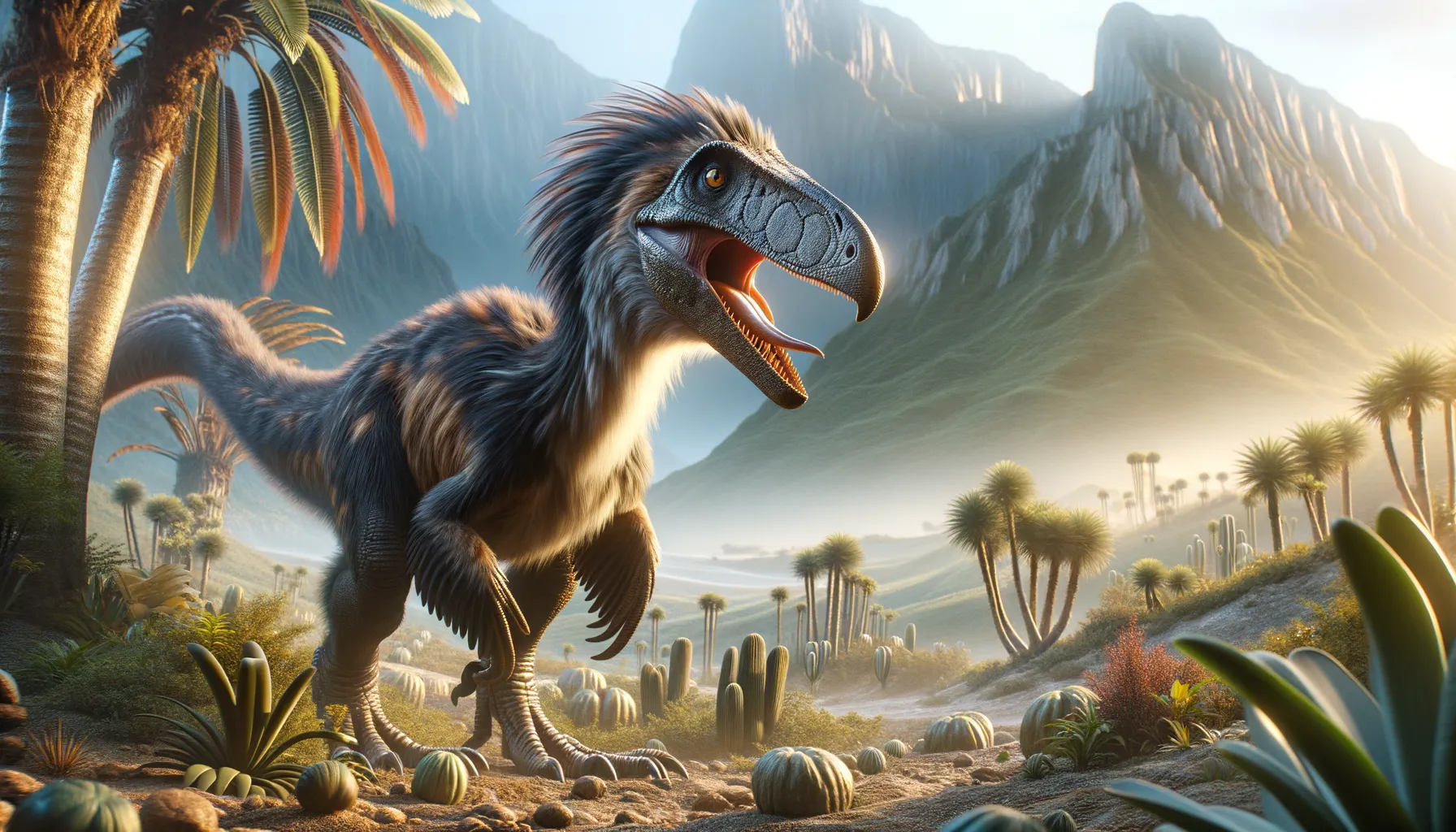
Harpymimus
Speedy beaked dinosaur of the Cretaceous age.
Period
Cretaceous
Length
Measured around 3 meters long.
Height
Stood about 1.5 meters tall.
Weight
Weighed approximately 55 kilograms.
Harpymimus was a unique and intriguing dinosaur from the early Cretaceous period. Characterized by its bird-like features and fast-paced lifestyle, it lived in regions that are now part of Mongolia. This dinosaur is noted for its beak-like mouth and was an omnivore, allowing it to adapt to varying diets in its environment. With a relatively lightweight and agile design, Harpymimus was a quick mover, which aided in both hunting and evading predators.
Diet
Harpymimus had an omnivorous diet, which means it could eat both plants and small animals. Its beak-like mouth enabled it to grasp and consume various foods available in its environment. This adaptability in diet may have contributed to its survival.
Hunting
Harpymimus likely used its speed and agility to catch small prey. Its sharp beak allowed it to efficiently grab and eat insects, small reptiles, and mammals. Being an omnivore, it would also forage for plants and fruits when available.
Environmental challenges
During the Cretaceous period, Harpymimus faced various environmental challenges, including climate fluctuations and competition for resources. Predators were abundant, requiring constant vigilance and quick agility to avoid becoming prey. Additionally, its environment had varying plant availability, influencing its foraging and dietary strategies. Adapting to these elements was crucial for survival.
Speed
It was likely a fast runner.
Lifespan
Estimated to live around 10-15 years.
First discovery
Discovered in Mongolia in 1981.
Fun Facts
- Harpymimus lived during the Early Cretaceous period, around 110 million years ago.
- It was discovered in modern-day Mongolia in a region known for its rich dinosaur fossils.
- Harpymimus belonged to a group of dinosaurs called theropods, which eventually gave rise to birds.
- Unlike many other theropods, Harpymimus had a long, beak-like snout and no teeth, indicating it might have had a varied diet.
- This dinosaur was relatively small, estimated to be about 6 feet long and likely weighed around 100 pounds.
- Its name, Harpymimus, means 'Harpies mimic', inspired by the mythical creatures from Greek mythology.
- Fossils of Harpymimus provide valuable insights into the evolution of early theropods.
Growth and Development
Harpymimus hatched from eggs and underwent significant growth during its juvenile stages. As it matured, its bones became denser, and muscle strength developed, contributing to its swift movement abilities. Growth rates might have varied based on environmental conditions and food availability.
Habitat
It lived in a semi-arid environment, with sparse vegetation and occasional water sources. The terrain consisted of open plains and some forested areas, providing diverse sources of food and cover. Adapting to this environment required resilience to temperature changes and resource scarcity.
Interaction with other species
Harpymimus likely coexisted with other herbivorous and carnivorous dinosaurs, engaging in competition for food and territory. While it avoided confrontation with larger predators, it may have thrived using its speed to navigate these complex social dynamics. The presence of mixed-species herds could have offered protection and improved foraging opportunities.
Natural lifespan
Most Harpymimus individuals lived between 10 to 15 years in the wild.
Reproduction
Harpymimus reproduced by laying eggs, likely in clusters within nests built on the ground. Parental care could have involved guarding the nest against predators and ensuring a suitable temperature for incubation. Once hatched, juveniles would receive some degree of protection from parents until they became more self-sufficient.
Social behaviour
It might have exhibited social behavior, living in small groups or alone based on resource availability. Grouping could provide mutual defense against predators and increased foraging efficiency. Social interactions may include vocal communications and displays to establish dominance or mate selection.
Fossil locations
Fossils of Harpymimus have been found in Mongolia, primarily in the Gobi Desert region. These discoveries have provided valuable insights into the dinosaur's morphology and lifestyle. The fossil sites also offer crucial data on the diversity of Cretaceous period life in Asia.
